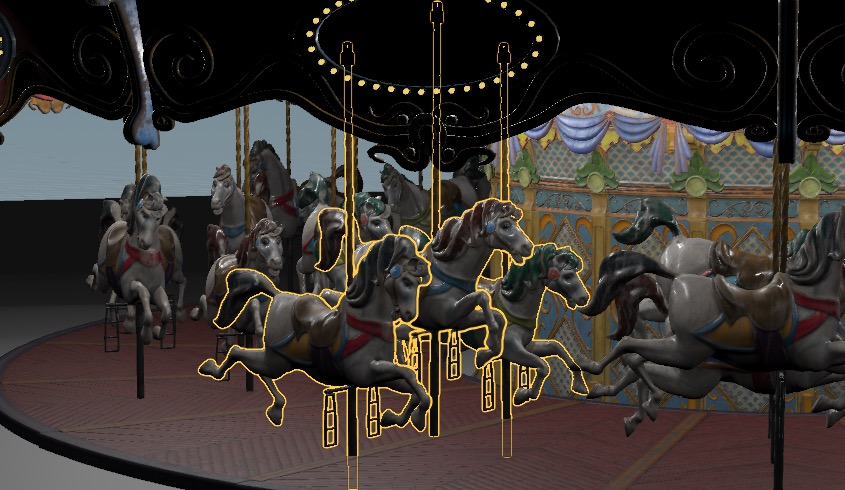See also what’s new in Karma rendering.
|
The You can design custom brushes for the Layout node based on a SOP network. |
|
New asset catalog pane type lets you maintain a library of USD component assets for use with the Layout tool. |
|
The |
|
Component builder tool creates a network snippet for building a USD component layer from SOP geometry with lots of support for best practices and features like variants, embedded materials, and display and collison proxies. |
|
|
-
Updated USD library to version 21.08.
-
The Solaris viewer now shows selection as a yellow outline rather than coloring the entire object.

-
The Houdini OpenGL delegate is much faster at drawing transformable instances, and thousands of light/camera guides.
-
Resample Transforms LOP uses existing time samples to generate better motion blur for primitives with fast transforms (especially rotations).
-
The
Graft Branches LOP can now set the branch to inherit from the source instead of the destination.
-
Add Variant has an integer context option,
VARIANTINPUT, which corresponds to each secondary input to the node. -
Asset Reference now has controls for variants.
-
The
Instancer LOP now adds
inputs:prefix when instancing Lights, and has a streamlined parameter interface. -
You can now overlay a foreground image in front of the Solaris viewport.
-
New tree matching pattern syntax features. New function-like syntax
%kind(component). You can use patterns as “arguments”:%ancestors(%kind(component) & /path/geo/**).Many new and improved match types.
-
Primitive patterns in LOP nodes now match pure override prims on the stage.
-
You can now “bake” the viewport overrides into an
Inline USD node in the network.
-
The viewer can now load and show payloads even if they are marked unloaded in the scene data.
-
New selection options for selecting specific Kinds.
-
More consistent behavior of T/R/E/Enter hotkeys for editing prims in the viewer.
-
Improved snapping UI.
-
New
button in the display toolbar to temporarily pause viewer updates.
-
You can now choose a different render purpose, viewport overrides, and load mask for each renderer.
-
SOP network import now uses SOP-level material assignments, has improved volume support.
-
The importer can now track object existence over time and author equivalent visibility changes on the USD prim.
-
New versions of
LOP Import SOP and
Unpack USD SOP for importing USD back into SOPs.
-
Configure Primitive can mark prims as “not editable”. You can use this to prevent accidentally moving a camera/light while the view is locked to it.
-
The ⇥ Tab menu in the viewer now only shows LOP-related tools, not the entire contents of the default tabs.
-
The test geometry nodes now reference USD layer files, rather than translating SOP output, for better performance.
-
New VEX functions for tracking prim specifiers and computing inherited primvars.
-
Support for the USD camera’s exposure attribute.
-
Implicit prototypes now appear in the scene tree.
-
Scene graph details pane now shows material assignments and allows navigation to materials.
-
You can now pin commonly accessed prims to the top of the scene graph tree.
-
Auto-expanding the scene graph tree to show all selected prims is now optional. You can choose instead to color closed branches with selected prims inside differently.
-
The scene graph tree respects the
IsHidden()metadata on USD primitives, which is intended to hide utility primitives from user interfaces.